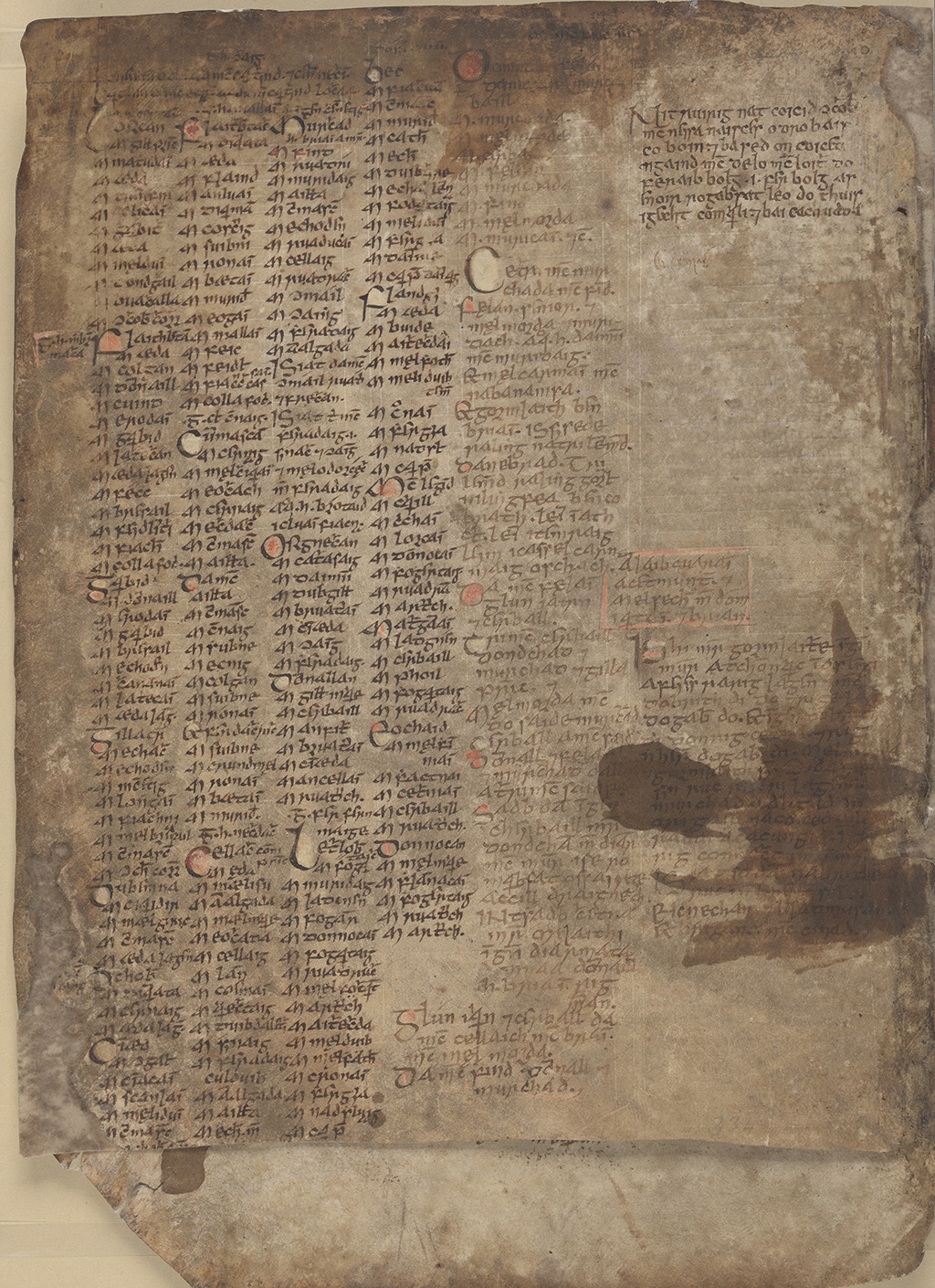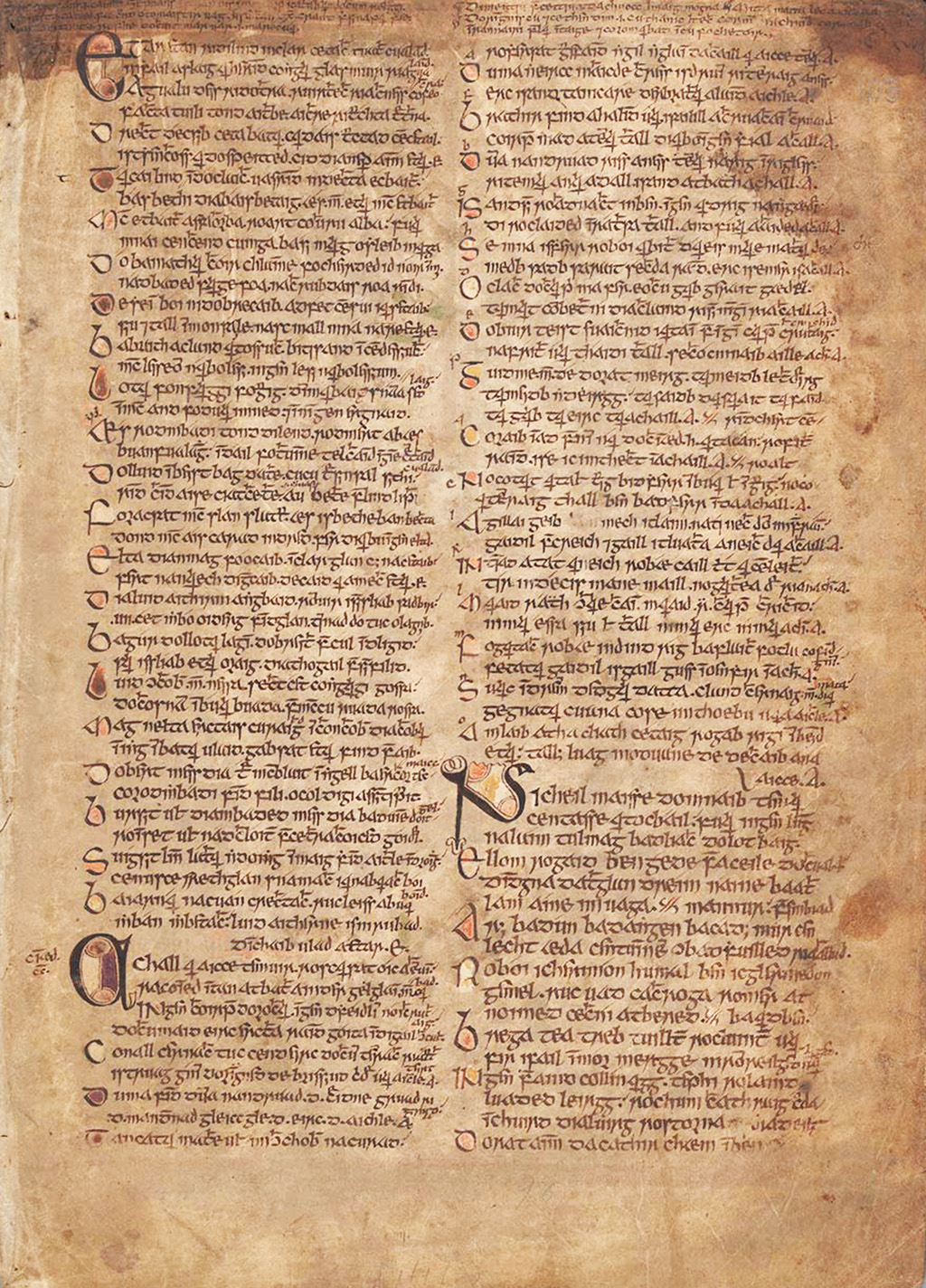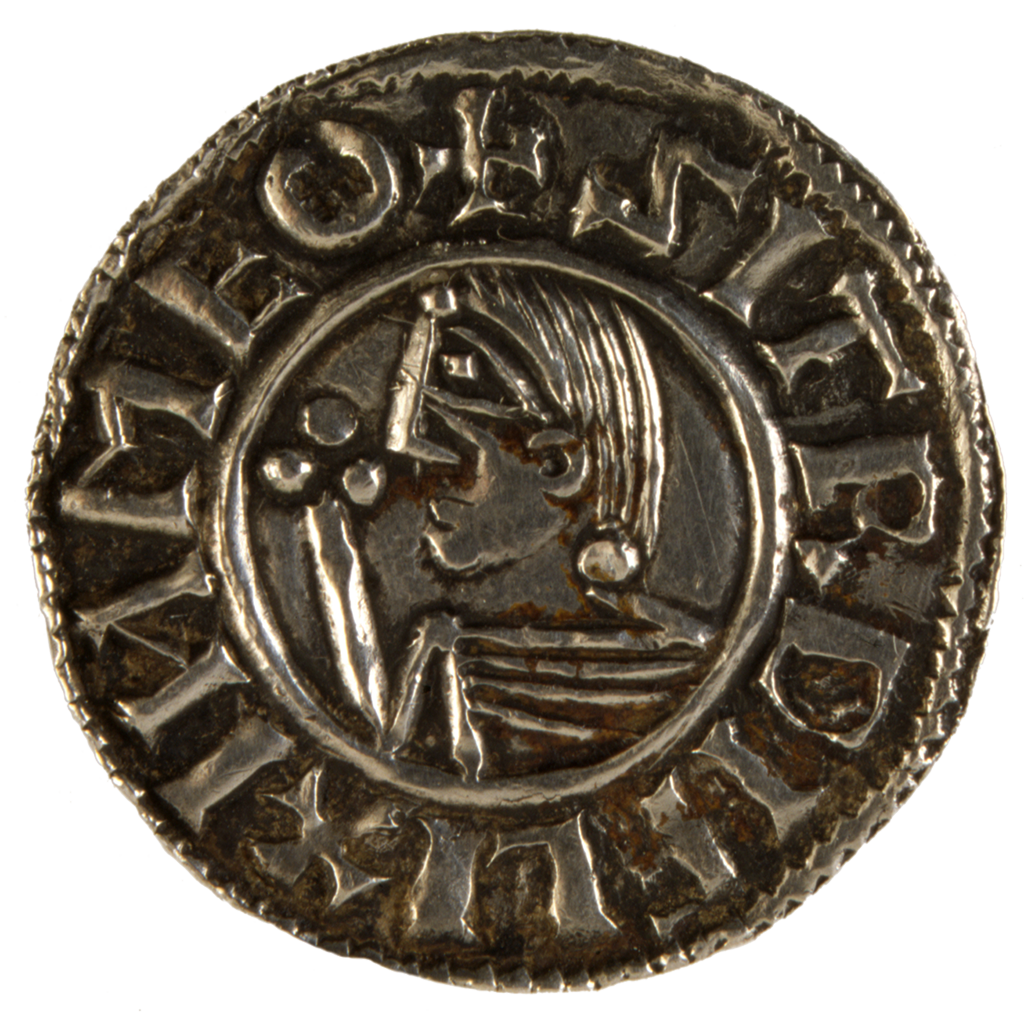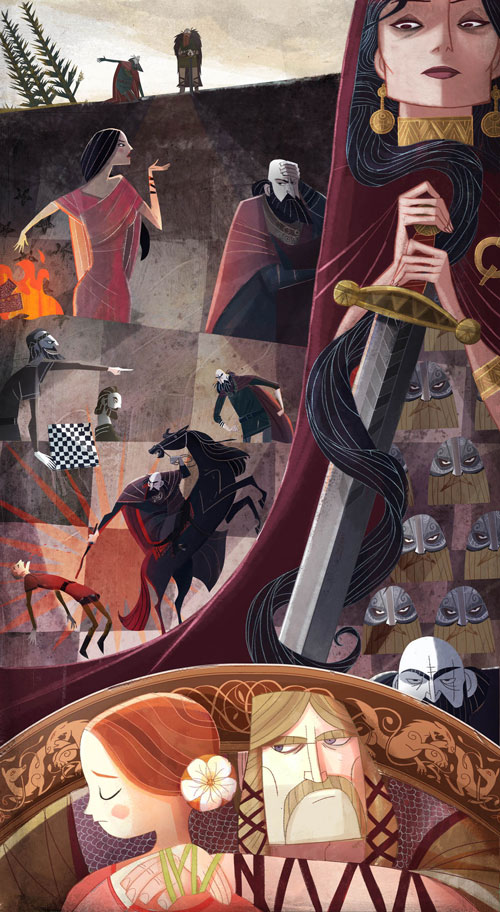Viking-Irish Alliances
Although Brian is popularly remembered for breaking Viking power in Ireland, he was allied with groups of Viking settlers in Ireland and overseas for much of his career.
After defeating the king of Viking Dublin, Sitriuc and his Leinster allies in 999, Brian wed his daughter to Sitriuc, and in return Sitriuc and the Leinstermen became his vassals. In 1013 large-scale warfare erupted against the Dublin-Leinster alliance, and Brian spent much of that autumn and winter campaigning in enemy territory. This warfare spilled over into 1014 and the Dubliners sought help from the wider Norse world. The stage was set for a showdown.
Gormlaith (died 1030), wife of Brian Boru
Book of Leinster
12th century
TCD MS 1339 p 334
Brian had a number of wives, one of whom was Gormlaith. She was a sister of the king of Leinster and mother of the king of Dublin, both of whom fought against Brian at the Battle of Clontarf.
Gormlaith was married several times. The red box in these genealogies contains the names of her three husbands: Amlaíb (king of Dublin), Máel Sechnaill (king of Tara) and Brian himself (king of Cashel/Munster and later king of Ireland). A satirical poem next to it declares:
Three leaps Gormlaith performed
which no other woman shall until Doomsday,
a leap into Dublin,
a leap into Tara,
a leap into Cashel,
the plain with the mound which surpasses all.
Achall ar aicce Temuir
Achall which faces Tara
Book of Leinster
12th century
TCD MS 1339 p 161
The dedication in this Irish poem is to Amlaíb, Viking king of Dublin. Amlaíb was married to Gormlaith, with whom he had a son, Sitriuc. He too became king of Dublin and fought against Brian at Clontarf. Upon Amlaíb’s death in 981 Gormlaith married Brian and they also had a son, Donnchad, who succeeded Brian after the Battle of Clontarf.
Phase 1 silver penny of Sitriuc, king of Dublin, c 995AD
This image is reproduced with the kind permission of the National Museum of Ireland
This is one of the first coins ever struck in Ireland. It was minted in Dublin c 995 AD and imitates contemporary English pennies. Around a central portrait of the king is the legend +SITR DIFLI X IN MEO (“Sitriuc, king of the Dubliners”).




